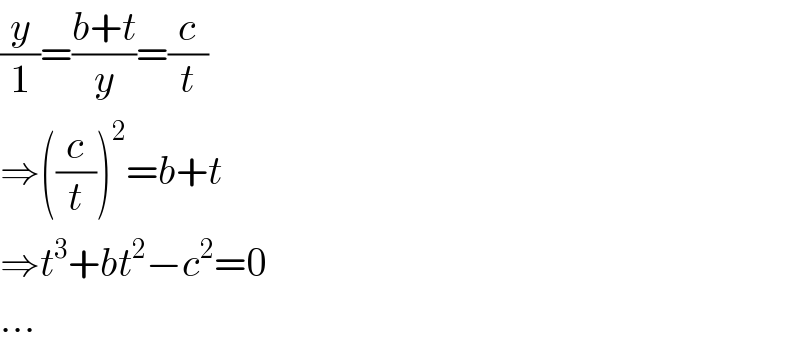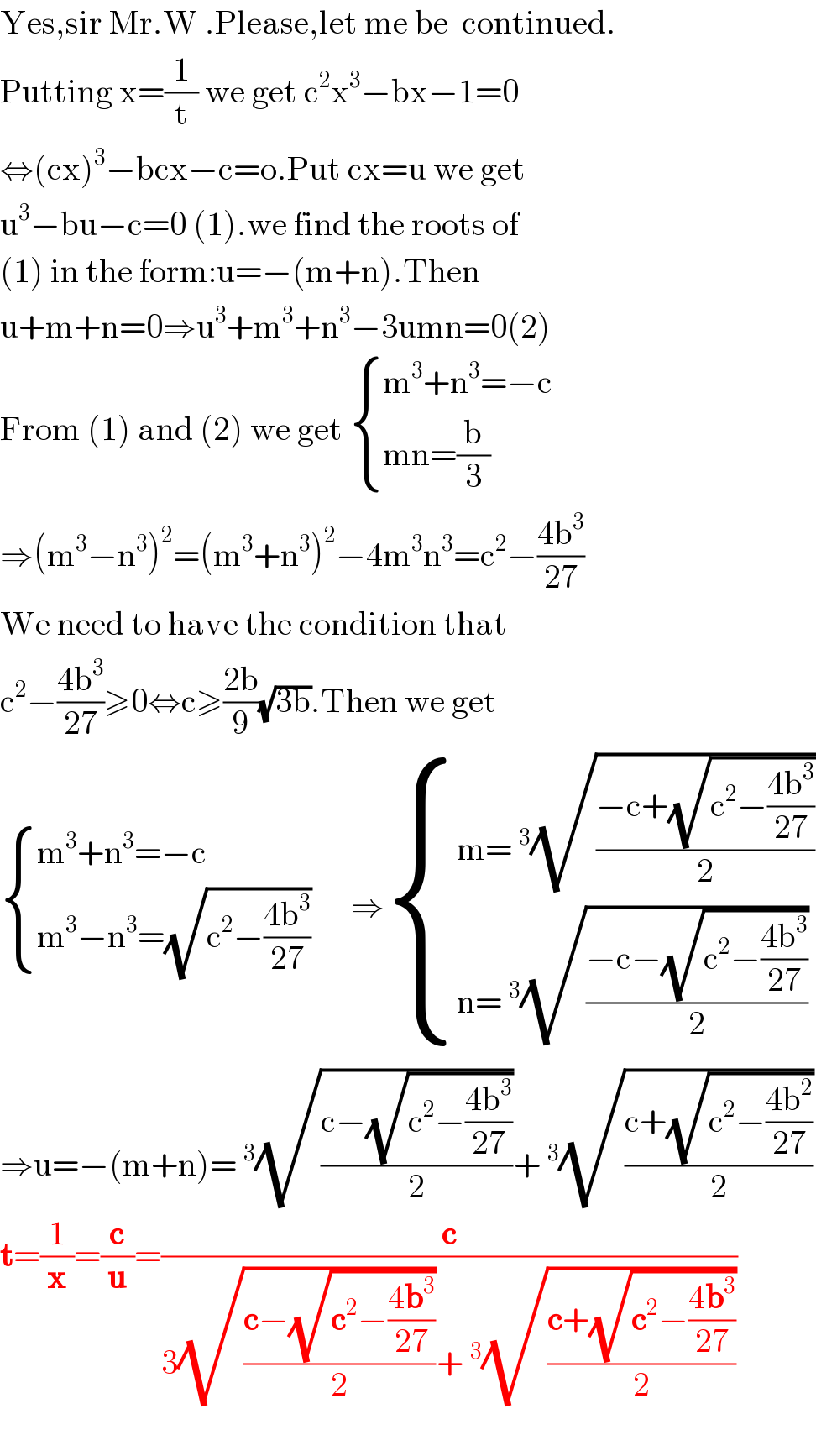
Question and Answers Forum
Question Number 100146 by ajfour last updated on 25/Jun/20

Commented by bemath last updated on 25/Jun/20

Commented by ajfour last updated on 25/Jun/20
![clearly (√(b+t))=(c/t) or (b+t)t^2 = c^2 let me check (b+((c^2 −2b−1)/(2(b+1))))[((c^2 −2b−1)/(2(b+1)))]^2 ≠ c^2 please check your answer sir, or post your workings..](Q100170.png)
Commented by ajfour last updated on 25/Jun/20

Answered by mr W last updated on 25/Jun/20

Commented by ajfour last updated on 25/Jun/20

Commented by bemath last updated on 25/Jun/20

Commented by 1549442205 last updated on 25/Jun/20

Commented by mr W last updated on 25/Jun/20

Commented by mr W last updated on 25/Jun/20

Commented by ajfour last updated on 25/Jun/20

Commented by 1549442205 last updated on 26/Jun/20

Commented by 1549442205 last updated on 30/Jun/20

